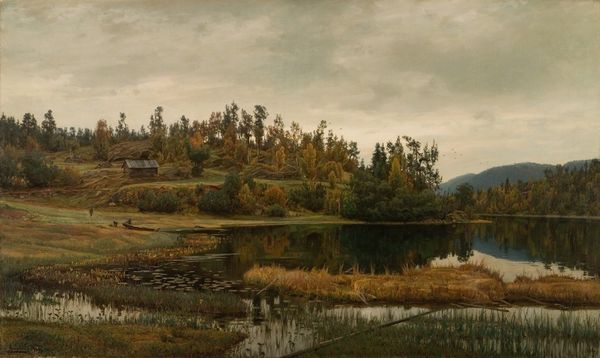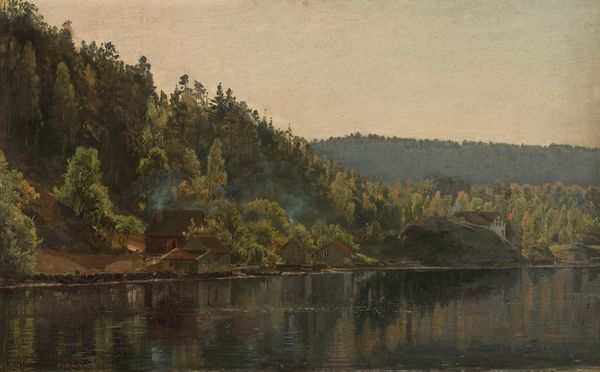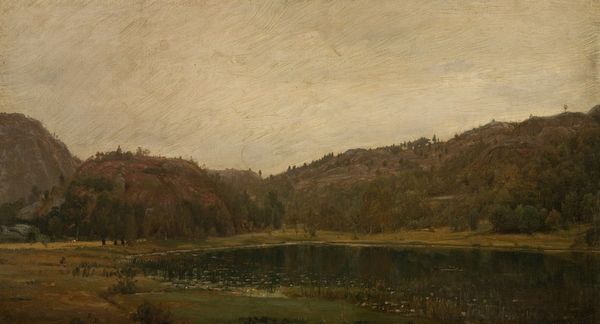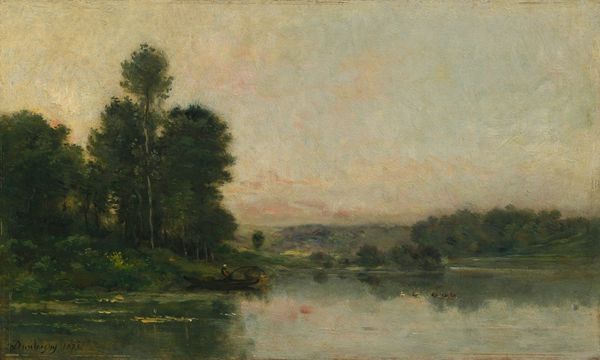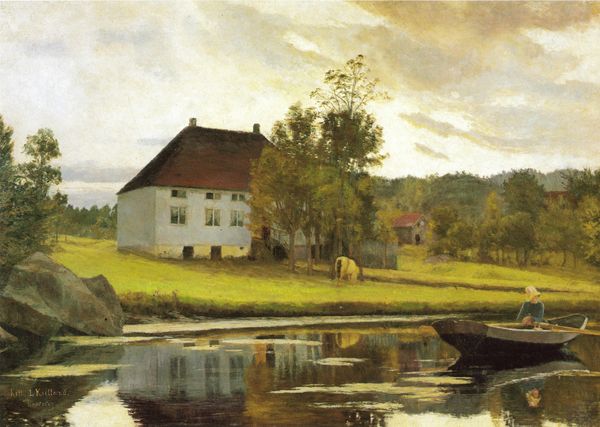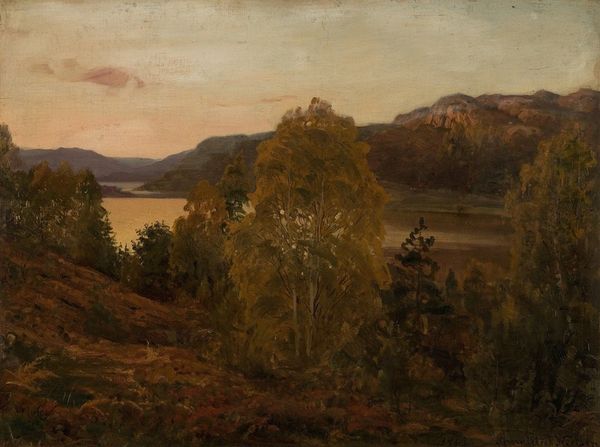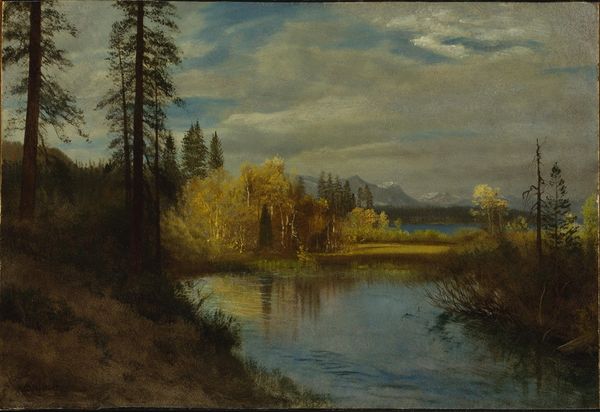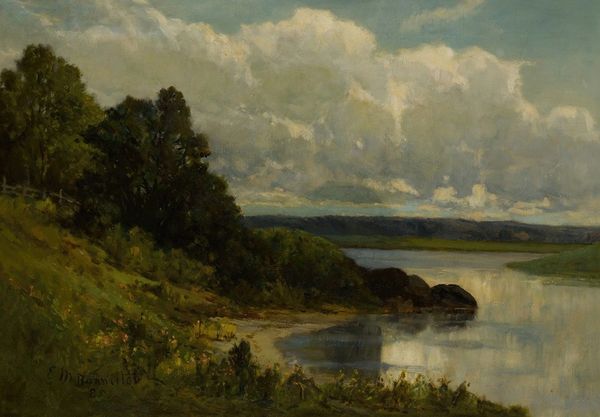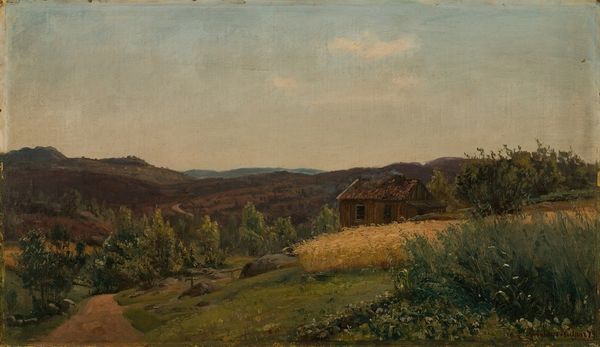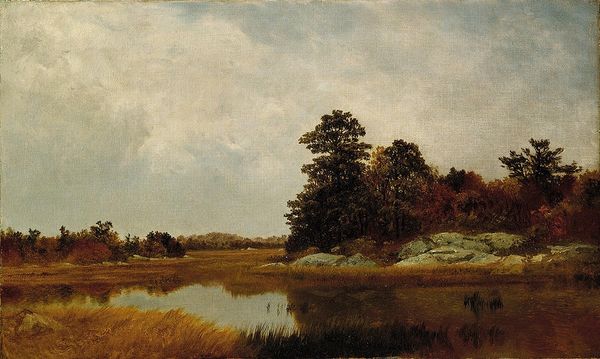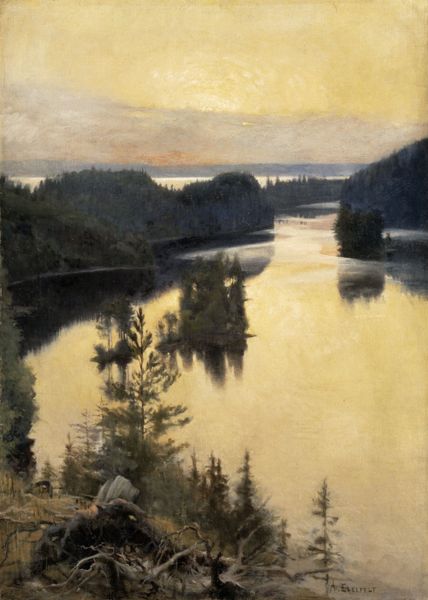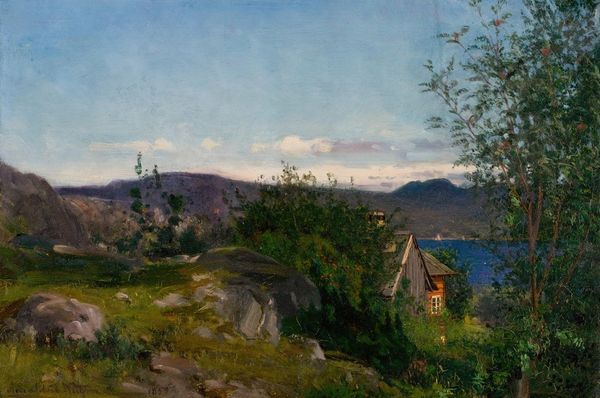
Copyright: Public Domain: Artvee
Editor: So here we have Amaldus Nielsen’s "Fra Tjerndalen ved Risør", painted in 1894. The still water reflecting the forest gives the whole scene a rather peaceful, even melancholic, feeling. I'm curious, what are your thoughts on it? Curator: It's interesting to consider Nielsen's methods. Oil paint allows for blending and layering which evoke atmosphere. But let’s consider the social conditions under which this painting was produced. The late 19th century saw increasing industrialization, and landscape painting served a powerful nostalgic function, didn't it? Editor: That’s an interesting perspective! I hadn't really considered it as a form of cultural pushback. How does Nielsen's choice of materials play into that? Curator: Think about it: Oil paint, a commercially produced substance, used to depict an "untouched" scene. The *act* of painting becomes a statement. Furthermore, who had access to these materials and the leisure to create such works? How might the rising middle class have influenced both the production and consumption of these landscape paintings? Editor: So it’s not just the *what* but the *how* and *who* that matters, reflecting social and economic shifts. It almost feels subversive. Curator: Exactly. Consider too, plein-air painting – it connects the artist directly to the landscape. How might that affect Nielsen’s choice of pigments or brushstrokes, trying to capture fleeting effects of light or atmosphere *in situ*? Editor: Thinking about the materials and process this way, brings a whole new level to my understanding. Thanks for illuminating that. Curator: Absolutely. Examining the materials and production shines a new light on these idyllic scenes, questioning that nostalgic vision.
Comments
No comments
Be the first to comment and join the conversation on the ultimate creative platform.
